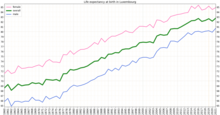
Smoking, alcohol consumption and obesity in the Republic of Ireland occur at rates higher than the OECD average.

Health in Sweden has generally improved over time, with life expectancy increasing, and is at a high level in international comparison. Life expectancy in 2021 was 84.8 years for women and 81.2 years for men and it increased 2.3 years on average from 2006 to 2019. However, the health situation varies between groups in Swedish society and equitable health has proven to be a challenge, with level of education, employment status and country of birth being factors that strongly influence health in the Swedish population. The two leading causes of death in Sweden are cardiovascular disease and cancer.
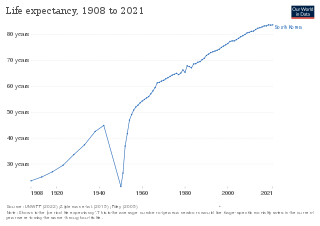
Life expectancy has been rising rapidly and South Korea ranked 3rd in the world for life expectancy. South Korea has among the lowest HIV/AIDS adult prevalence rate in the world, with just 0.1% of the population being infected, significantly lower than the U.S. at 0.6%, France's 0.4%, and the UK's 0.3% prevalence rate. South Korea has a good influenza vaccination rate, with a total of 43.5% of the population being vaccinated in 2019. A new measure of expected human capital calculated for 195 countries from 1920 to 2016 and defined for each birth cohort as the expected years lived from age 20 to 64 years and adjusted for educational attainment, learning or education quality, and functional health status was published by the Lancet in September 2018. South Korea had the sixth highest level of expected human capital with 26 health, education, and learning-adjusted expected years lived between age 20 and 64 years.
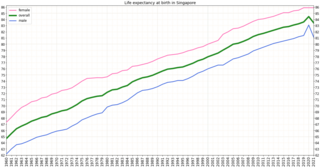
Singapore is one of the wealthiest countries in the world, with a gross domestic product (GDP) per capita of more than $57,000. Life expectancy at birth is 82.3 and infant mortality is 2.7 per 1000 live births. The population is ageing and by 2030, 20% will be over 65. However it is estimated that about 85% of those over 65 are healthy and reasonably active. Singapore has a universal health care system.

A new measure of expected human capital calculated for 195 countries from 1990 to 2016 and defined for each birth cohort as the expected years lived from age 20 to 64 years and adjusted for educational attainment, learning or education quality, and functional health status was published by the Lancet in September 2018. The Netherlands had the fourth highest level of expected human capital with 27 health, education, and learning-adjusted expected years lived between age 20 and 64 years.
A new measure of expected human capital calculated for 195 countries from 1990 to 2016 and defined for each birth cohort as the expected years lived from age 20 to 64 years and adjusted for educational attainment, learning or education quality, and functional health status was published by the Lancet in September 2018. Taiwan had the fifth highest level of expected human capital with 26 health, education, and learning-adjusted expected years lived between age 20 and 64 years.

The major causes of deaths in Finland are cardiovascular diseases, malignant tumors, dementia and Alzheimer's disease, respiratory diseases, alcohol related diseases and accidental poisoning by alcohol. In 2010, the leading causes of death among men aged 15 to 64 were alcohol related deaths, ischaemic heart disease, accident, suicides, lung cancer and cerebrovascular diseases. Among women the leading causes were breast cancer, alcohol related deaths, accidents, suicides, ischaemic heart disease and lung cancer.

A new measure of expected human capital calculated for 195 countries from 1990 to 2016 and defined for each birth cohort as the expected years lived from age 20 to 64 years and adjusted for educational attainment, learning or education quality, and functional health status was published by The Lancet in September 2018. Slovenia had the twenty-fourth highest level of expected human capital with 23 health, education, and learning-adjusted expected years lived between age 20 and 64 years.
In 2006, life expectancy for males in Cyprus was 79 and for females 82 years. Infant mortality in 2002 was 5 per 1,000 live births, comparing favourably to most developed nations.

A new measure of expected human capital calculated for 195 countries from 1990 to 2016 and defined for each birth cohort as the expected years lived from age 20 to 64 years and adjusted for educational attainment, learning or education quality, and functional health status was published by The Lancet in September 2018. Estonia had the seventeenth highest level of expected human capital with 24 health, education, and learning-adjusted expected years lived between age 20 and 64 years.
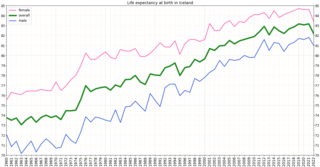
Iceland had the third-lowest crude mortality rate in Europe, at 355 per 100,000 population in 2015. It had the lowest rate of male smokers in Europe: 17%.

A new measure of expected human capital calculated for 195 countries from 1990 to 2016 and defined for each birth cohort as the expected years lived from age 20 to 64 years and adjusted for educational attainment, learning or education quality, and functional health status was published by the Lancet in September 2018. Belgium had the tenth highest level of expected human capital with 25 health, education, and learning-adjusted expected years lived between age 20 and 64 years.

Life expectancy at birth in Belarus was 69 for men and 79 for women in 2016.

Life expectancy in France at birth was 81 years in 2008. A new measure of expected human capital calculated for 195 countries from 1990 to 2016 and defined for each birth cohort as the expected years lived from age 20 to 64 years and adjusted for educational attainment, learning or education quality, and functional health status was published by the Lancet in September 2018. France had the ninth highest level of expected human capital with 25 health, education, and learning-adjusted expected years lived between age 20 and 64 years.
The post conflict South Sudan has huge challenges in delivering health care to the population. The challenges include: crippled health infrastructures, nearly collapsed public health system, and inadequate qualified health professionals. The country is far from achieving the MDGs by end of 2015. The health system needs a major resuscitation, in addition to supporting and developing health training institutions.

Legislation on public health issues in Austria is fragmented and in some cases outdated and patchy according to the European Observatory on Health Systems and Policies.
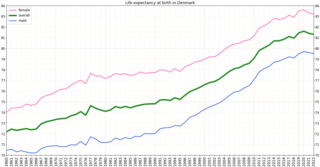
As of 2012, Denmark had a life expectancy of 79.5 years at birth, up from 75 years in 1990. This ranks it 37th among 193 nations, behind the other Nordic countries. The National Institute of Public Health of the University of Southern Denmark has calculated 19 major risk factors among Danes that contribute to a lowering of the life expectancy; this includes smoking, alcohol, drug abuse and physical inactivity. The large number of Danes becoming overweight is an increasing problem and results in an annual additional consumption in the health care system of DKK 1,625 million. In a 2012 study, Denmark had the highest cancer rate of all countries listed by the World Cancer Research Fund International; researchers suggest the reasons are better reporting, but also lifestyle factors like heavy alcohol consumption, smoking and physical inactivity. Denmark had the second highest death rate from alcohol of any region in Europe in 2015 at 6.9 per 100,000 population.
Life expectancy in Andorra was 79.8 for men and 85.2 years for women in 2010.

A new measure of expected human capital calculated for 195 countries from 1990 to 2016 and defined for each birth cohort as the expected years lived from age 20 to 64 years and adjusted for educational attainment, learning or education quality, and functional health status was published by The Lancet in September 2018. Latvia had the twenty-first highest level of expected human capital with 23 health, education, and learning-adjusted expected years lived between age 20 and 64 years.
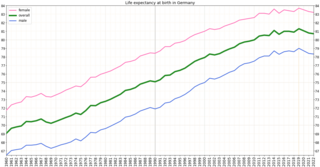
Germany ranked 20th in the world in life expectancy in 2014 with 76.5 years for men and 82.1 years for women. It had a very low infant mortality rate, and it was eighth place in the number of practicing physicians, at 3.3 per 1,000 people
